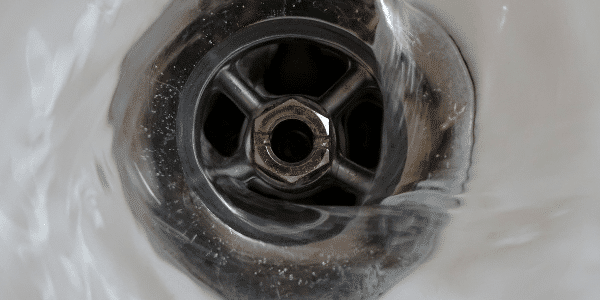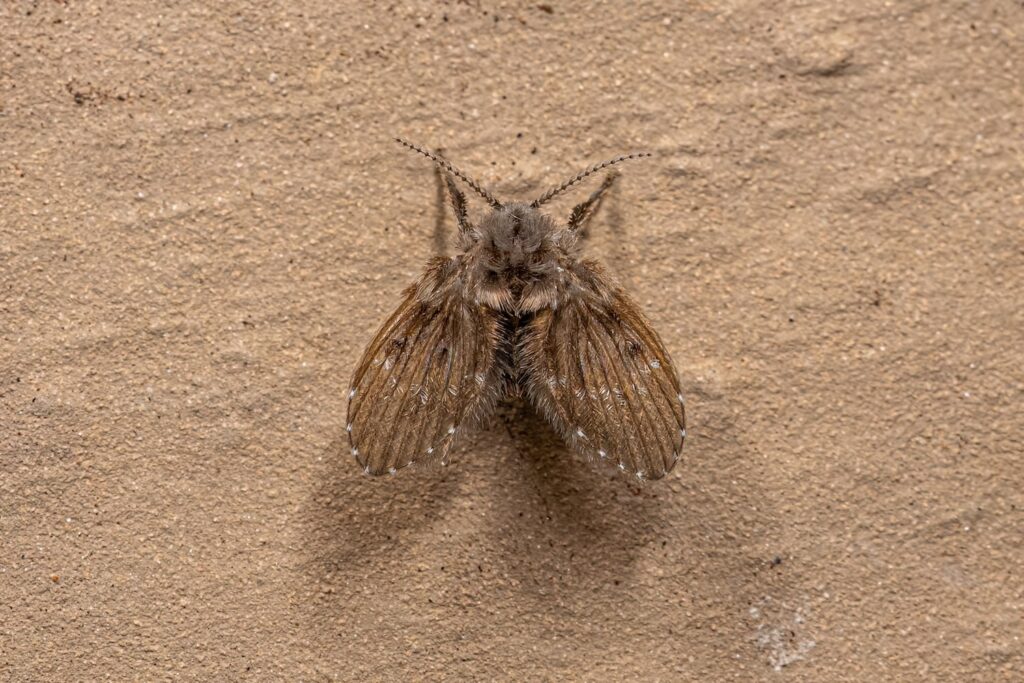
How to Get Rid of Drain Flies: A Homeowner’s Guide
Published: August 20, 2025 / Last Updated: August 20, 2025
Tiny, fuzzy, and frustrating, drain flies may be small, but they can quickly become a considerable problem in your home. Often mistaken for fruit flies or gnats, these pests typically gather around sinks, bathtubs, and floor drains. Adult flies are often seen near drains, and these visible pests are a sign of underlying breeding grounds within your plumbing. So, what exactly are drain flies, and more importantly, how can you get rid of them?
In this article, we’ll explore what causes drain flies, how to eliminate them—including the importance of removing breeding grounds—and how to prevent them from returning.

What Are Drain Flies?
Drain flies are small insects with fuzzy bodies and wings, similar to a moth. They are also known as moth flies because of their fuzzy, moth-like appearance. Though harmless in terms of biting or spreading disease, they are often a sign of a deeper plumbing issue or poor drain hygiene.
Drain flies live inside pipes, drains, and other moist environments where organic material builds up, as these areas provide the perfect habitat for them to lay eggs and feed.
While both drain flies and house flies are flying pests, house flies differ in appearance and behavior, and require different control methods.
Characteristics of Drain Flies
Drain flies, also known as sink flies, sewer flies, or filter flies, are tiny insects that thrive in moist environments around your home. These pests are easily recognizable by their fuzzy bodies and distinctive moth-like wings, which give them a soft, velvety appearance. Adult drain flies are usually grayish-brown and measure between 1.5 and 5 millimeters in length. They have six legs and a pair of wings marked with unique vein patterns, making them resemble miniature moths.
Drain flies tend to gather around drains, sinks, and other areas where standing water and organic matter are present. They feed on the organic material that accumulates in these damp spots and lay eggs in the same locations. Because of their weak flying ability, you’ll often see adult drain flies resting on walls near drains or hovering just above the surface. Their preference for moist environments and organic buildup makes them a common nuisance in bathrooms, kitchens, and basements.
Where Do Drain Flies Come From?
Drain flies breed in the organic buildup that lines the insides of pipes, particularly in drains that are rarely used or cleaned. Stagnant water in drain pipes and sewage systems provides ideal breeding conditions for drain flies. The slime layer inside a clogged or slow-moving drain creates the perfect environment for these pests to lay eggs and thrive.
You might find them:
- Hovering near sinks or bathtubs
- Around floor drains in basements or utility rooms
- Near sump pump pits or septic tanks
- In or around nearby drains showing signs of infestation
If you see multiple flies around a drain, chances are they’re breeding nearby.
Why Are Drain Flies Around Your Drain?
Drain flies are attracted to wet environments with a buildup of organic matter. Hair, soap scum, grease, and food particles—including food residue, especially in kitchen and bathroom drains—can stick to the inside of your pipes and collect matter to create an ideal habitat for drain flies.
Often, the presence of drain flies is an indicator of:
- Clogged or slow drains
- Uncleaned or infrequently used drains
- Underlying plumbing problems, such as leaks or backed-up systems
- A problematic drain line that may be the source of persistent drain fly issues
Dangers of Drain Flies
While drain flies are mostly considered a nuisance, they can pose certain risks to your home and health. Although drain flies do not bite or transmit diseases directly, their presence can lead to contamination of surfaces as they move from drains to countertops and other areas, potentially spreading bacteria. Drain fly infestations can also aggravate respiratory issues, such as bronchial asthma, especially in sensitive individuals.
If left untreated, a drain fly infestation can signal deeper problems within your drainage system, such as blockages or leaks, which may result in costly repairs down the line. Additionally, the presence of drain flies can attract other pests, like sewer gnats, further complicating the situation. Addressing a drain fly problem promptly not only helps maintain a clean and healthy home but also prevents more serious issues with your drains and plumbing.
How to Get Rid of Drain Flies
Here’s a step-by-step method to safely and effectively eliminate drain fly issues. This guide also includes preventive measures to stop future infestations.
1. Identify the Source
Start by using the duct tape test to identify the suspect drain. Simply cover each drain in your home with duct tape or plastic wrap overnight to trap any emerging flies. If you find flies stuck to the tape the next day, that drain is likely the suspect drain and the main source of the infestation.
2. Clean the Drain Thoroughly
Flush the drain with boiling water, followed by a mixture of baking soda and vinegar. If needed, remove the drain cover to access and clean the inside of the drain, making it easier to eliminate organic buildup and drain fly larvae. Cleaning the drain thoroughly helps break down organic material and kill larvae. For best results, let the baking soda and vinegar mixture sit overnight before rinsing.
Tip from Magnolia Experts: Enzyme-based drain cleaners are a safe plumbing-friendly option that effectively eliminates the slime layer without damaging your pipes. This is because they don’t rely on harsh chemicals like lye or acids.
3. Scrub the Inside of the Pipe
Use a long, stiff-bristled brush (available at most hardware stores) to remove the sludge from inside the drain.
4. Repeat the Process for a Few Days
Drain flies can be persistent. Multiple cleanings may be necessary to eliminate eggs and larvae.
5. Fix Any Plumbing Issues
If the problem persists, it may be due to a slow leak, a broken pipe, or an improperly vented drain, all of which a licensed plumber from Magnolia Companies can inspect and repair. Issues with your septic system or septic tank can also contribute to drain fly problems and may require professional inspection. If DIY methods do not resolve the infestation, contacting a pest control professional may be necessary to identify and eliminate persistent drain fly issues properly.
Preventing Future Infestations
The key to keeping drain flies away is simple: keep drains clean, clear, and dry. Here are a few tips:
- Run hot water through unused drains weekly
- Keep sinks and tubs free of hair and debris
- Install drain screens to catch solids
- Schedule regular plumbing maintenance with Magnolia
When to Call a Professional
If your DIY efforts aren’t enough or you suspect a larger plumbing issue, professional drain cleaning services are your best option. At Magnolia, our trained technicians use advanced tools to thoroughly clean and inspect your plumbing system, eliminating the breeding ground for drain flies at its source.

Say Goodbye to Drain Flies for Good
Drain flies might seem like just another household pest, but they often signal a bigger problem beneath the surface. Trust the experts at Magnoliato to eliminate drain fly infestations and restore cleanliness and peace of mind to your home.
Call us or schedule your service online to keep your drains flowing and your home fly-free.
Share This Article:
Request An Estimate
Contact us for a free estimate. It's just one form or phone call away!
Join Our Newsletter
Submit your email to receive promotions.
